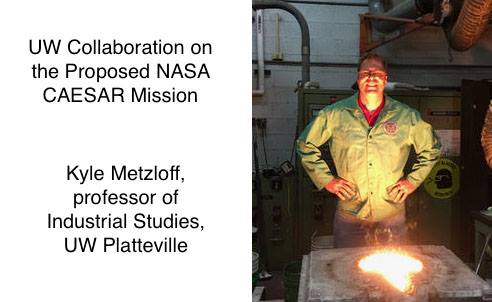UW Collaboration on the Proposed NASA CAESAR Mission

How did a 375 lb. iron weight cast by students at UW-Madison and UW-Platteville help the CAESAR Mission get off the ground and become one of two finalists in a NASA proposal? If selected, CAESAR, which stands for Comet Astrobiology Exploration Sample Return, would visit the Churyumov-Gerasimenko comet and collect a small sample of its surface material. Led by Dr. Steve Squyres, principal investigator on NASA’s Mars exploration rovers, the device could grab at least a 100-gram sample from the nucleus of the comet and deliver it back to Earth in capsules to help demonstrate how the same materials contributed to early Earth.
The UW project entailed designing a shaped weight that had a similar radius at the bottom as the capsule and the same mass. The return to earth will be without a parachute and will have a very large acceleration when it contacts the earth. The acceleration needed to be measured to help design the internal components to be strong enough for that impact. UW Students cast the test article with mounts for the accelerometers and even conducted some test drops in the UW Foundry Laboratory. Their project was done in secrecy as the initial competition for the NASA project is fierce therefore we had to remain quiet about this until the recent announcement of the finalists.
More info on CAESAR here: https://en.wikipedia.org/wiki/CAESAR_(spacecraft)
